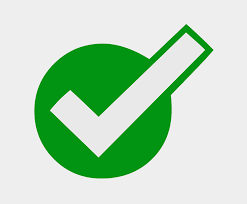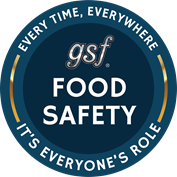Title Page
-
Conducted on
-
Prepared by
Untitled Page
-
Floors are clear of obstacles and tripping hazards e.g. power leads, tools etc.
-
Floors are clear of oils or other substances that can cause slips
-
Work benches in use are reasonably tidy with consideration of work being undertaken
-
Items not in use are stored safely (eg hand / power tools)
-
Signs for safety (speed, forklifts in use, PPE) and remote supervision (eg visitor access, no admittance) are visible and in good condition
-
PPE is available at point of use and in good condition
-
There is evidence of PPE (compliant with signage or SOP) being adhered to (observe at least one person)
-
Waste is disposed of appropriately in bins provided
-
Lock out station is stocked
-
Fire extinguishers and accompanying signage are in place (extinguisher ID sign directly above unit and location sign at least 2000mm from the floor & clearly visible)
-
There is evidence to demonstrate fire extinguishers been serviced in the last 6 mths
-
Fire extinguishers have safety pin and security tie intact
-
There is clear access to fire equipment with 1m square clearance to any obstructions
-
Exits are clearly marked and clear of obstructions
-
Emergency management plans available and up to date
-
First aid kits are available with accompanying signage, with evidence of inspection within last 6 months.
-
Electrical leads, plugs, sockets / switches are in good condition / free from any visible damage
-
Adequate number of power points available for appliance use, power boards are not overloaded
-
Electrical switchboards in good condition, tested within last 6 months and clear access within 1m square clearance around switchboards
-
Electrical equipment that requires testing and tagging is in place and current (spot check at least 5 items per bay or workspace)
-
Observe and check with any workers and determine if there is adequate illumination or natural light over work areas
-
Lifting devices are accessible (eg trolleys)
-
Safety Data Sheets are available for chemicals in use
-
There is good natural air movement in and around where the chemicals are stored and used
-
Obvious ignition sources have been removed from the storage and handling areas
-
Class 2 flammable aerosol cans stored in flammable cage, compliant to AS, and kept at least 3 metres from heat and ignition sources
-
Class 3 flammable liquids are stored in flammable storage cabinet, compliant to AS, and kept at least 3 metres from heat and ignition sources
-
All decanted containers are labelled with name, risk and safety phrases
-
Chemical storage areas are clean & free from flammable / combustible materials
-
Where chemicals are present - appropriate personal protective equipment (PPE) is available and readily accessible
-
Spill containment materials (eg spill kit) are available
-
Staff are aware of the location of eye wash / shower. Spot check 1 person
-
Stools or ladders are sturdy and in good condition
-
Items are stored in accordance with ergonomic principles. Frequently used or heavy items stored between mid thigh / shoulder height. Smaller, lightweight or infrequently used items stored in lower or higher areas.
-
Used chemical drums are labelled and stored appropriately / with excess removed from premises.
-
Areas are free from overhanging risks from items stored overhead or faulty roofing on outbuildings / sheds
-
Areas are free of rubbish or workplace materials
-
Areas are clear of obstacles and tripping hazards e.g. power leads, tools etc.
-
Areas are clear of oils or other substances that can cause slips
-
Signs for safety (speed, forklifts in use, PPE, assembly area) and remote supervision (eg visitor access, no admittance) are visible and in good condition
-
The Boiler Inspection certificate displayed is current
-
There is evidence of the Boiler monitoring sheets being updated?
-
Does the staff member(s) have any concerns to raise?
-
Is the inspection complete?







